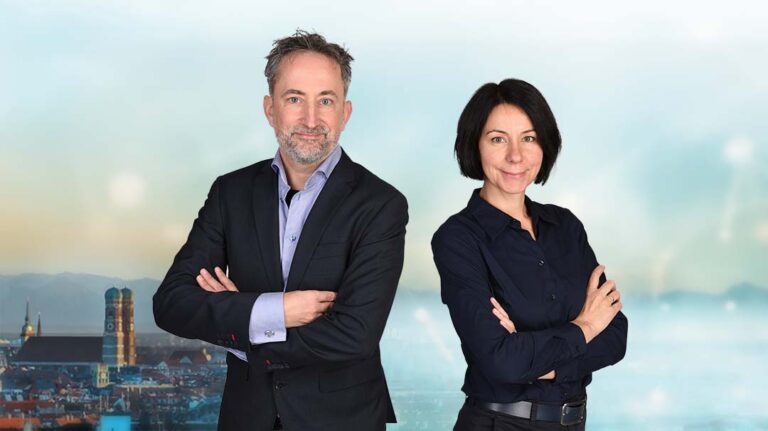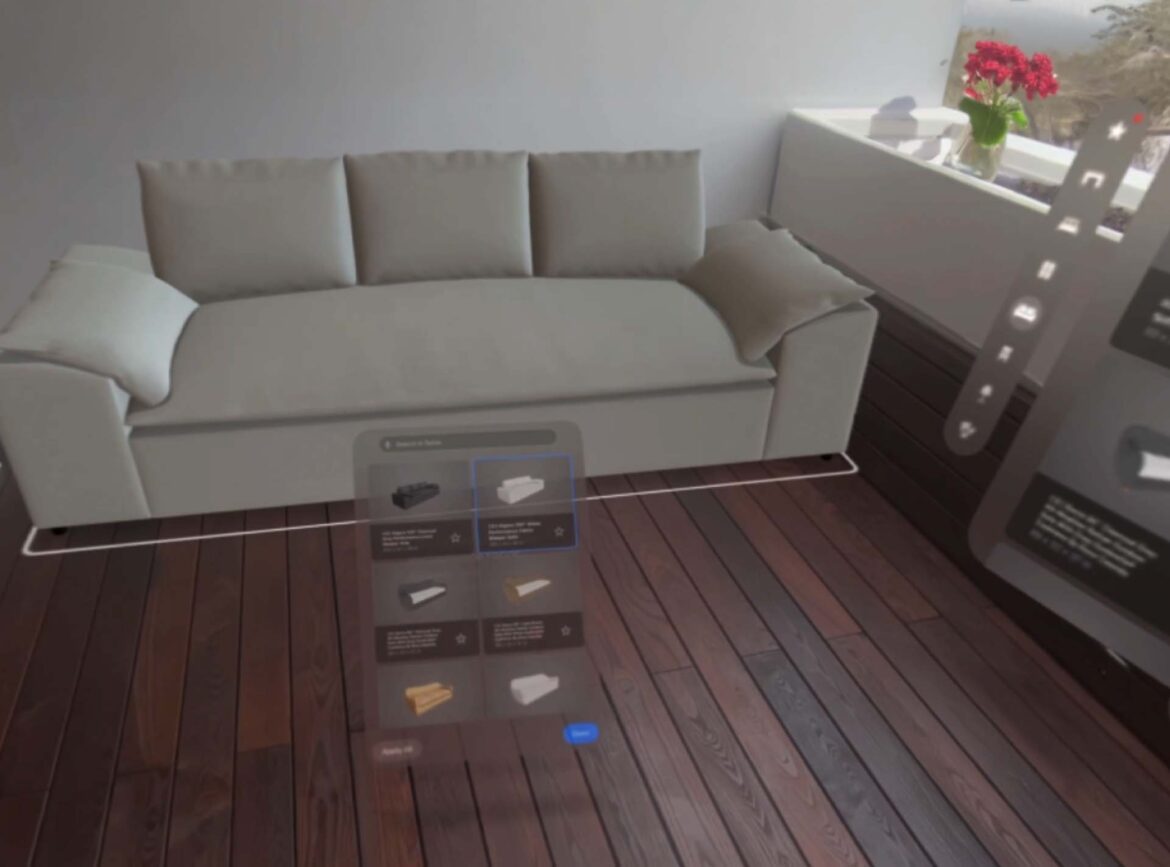The Future of Spatial Computing: Revolution in Digital Space
Photo: © Ulrich Buckenlei | Application of Spatial Computing in Architectural Planning.
Interactive 3D Models: A New Dimension of Design
Spatial computing is transforming the way we design and experience spaces. With mixed reality headsets like the Apple Vision Pro, users can place and interact with digital objects in real-world environments. This opens up new possibilities for architecture, design, and interactive product visualization.
- Precise spatial placement: Furniture or objects can be visualized in real size.
- Realistic lighting simulation: Light reflections and shadows behave as in the real world.
- Direct interaction: Users can move, scale, and adjust objects.

Virtual furniture placement with Spatial Computing
Photo: © Ulrich Buckenlei | Application of Mixed Reality in Interior Design.
Technologies Behind Digital Modeling
The high precision of digital 3D models is enabled by various methods. Depending on the use case, different techniques are applied, each with its own strengths.
- CAD models: Perfect geometric accuracy for design and architecture.
- Photogrammetry: Generates realistic textures and detailed 3D reconstructions.
- Gaussian Splatting: Highly efficient point cloud method for photorealistic representations.
- LiDAR scanning: Extremely fast and precise capture of real objects.

Different methods of 3D generation
Photo: © Ulrich Buckenlei | Digital modeling for Virtual Reality and architecture.
Processing Time and Accuracy Comparison
An important aspect when choosing a 3D generation method is the balance between accuracy and processing time. While some methods offer extremely high detail fidelity, others are optimized for rapid model creation.
- CAD models: High accuracy, moderate processing time.
- Photogrammetry: Very realistic results but longer processing times.
- Gaussian Splatting: Fastest method with high visual quality.
- LiDAR scanning: Fastest capture but limited detail accuracy.

Comparison of 3D generation methods for Spatial Computing
Diagram: Representation of accuracy and processing time of different 3D generation methods.
The diagram illustrates how various 3D technologies differ in terms of precision and processing time. While CAD models and photogrammetry provide high detail accuracy, they require significantly more computing time than methods like Gaussian Splatting or LiDAR scanning. Notably, Gaussian Splatting combines impressive visual quality with extremely fast processing.
Comparison of Processing Time for Different 3D Generation Methods
While the accuracy of 3D models is a crucial factor for their use in architecture, design, or industry, the required processing time is also central. Depending on the method, the time required to create a detailed 3D model varies significantly.
Manual processing times can pose a significant challenge, especially when precise post-processing is necessary. CAD models often require lengthy manual construction processes, while photogrammetry and Gaussian Splatting offer shorter processing times. LiDAR scanning, on the other hand, stands out for its efficiency, as it delivers almost instantly usable results.
- CAD models: Very precise but time-consuming manual construction.
- Photogrammetry: Medium processing time, depending on the number of images and software processing.
- Gaussian Splatting: Very fast generation but requires optimization for best quality.
- LiDAR scanning: Shortest processing time, generates directly usable point clouds and models.

Efficiency of 3D Generation Methods
Diagram: Comparison of processing time for different 3D generation methods.
Video: Spatial Computing in Action
Watch this video to see how mixed reality and 3D scanning are applied in practice.
Spatial Computing in Action
Video: Application of 3D scanning and Mixed Reality in practice.
Invitation to Collaboration
Spatial computing opens up new possibilities for design, architecture, and product visualization. Visoric supports companies in integrating these technologies into their workflows.
- Consulting: Strategic development of spatial computing applications.
- Data analysis: Precise 3D modeling for immersive environments.
- Technology integration: Implementation of mixed reality and AI-powered workflows.
Contact us to learn more about the future of spatial computing and develop innovative solutions for your company!
Contact Us:
Email: info@xrstager.com
Phone: +49 89 21552678
Contact Persons:
Ulrich Buckenlei (Creative Director)
Mobil +49 152 53532871
Mail: ulrich.buckenlei@xrstager.com
Nataliya Daniltseva (Projekt Manager)
Mobil + 49 176 72805705
Mail: nataliya.daniltseva@xrstager.com
Address:
VISORIC GmbH
Bayerstraße 13
D-80335 Munich


